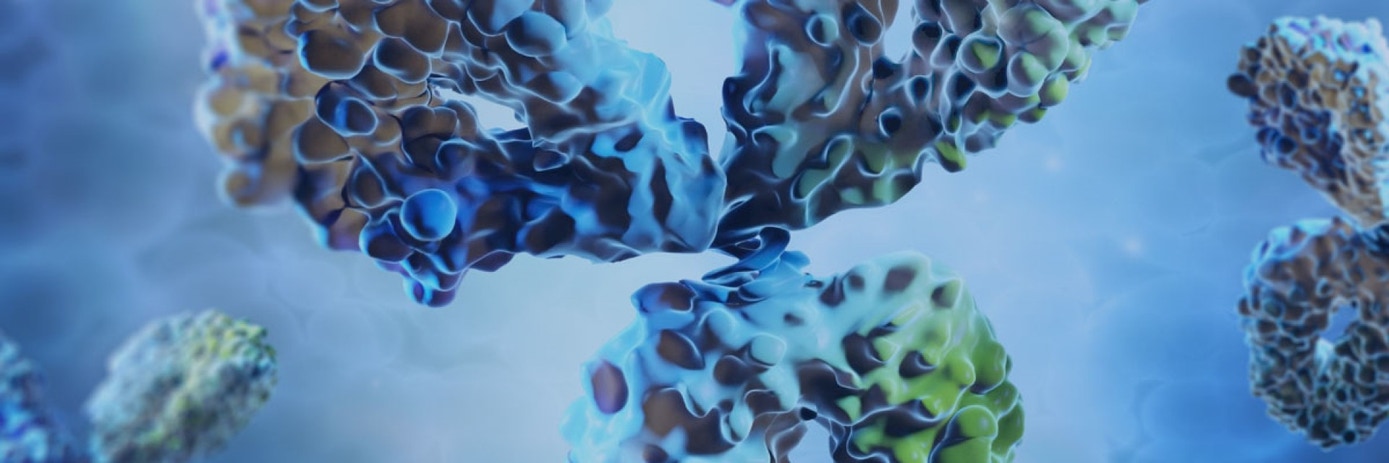Antibody therapeutics have grown in complexity over their 30-year history in clinical application. Newer generation antibody therapies target multiple modalities and are multi-specific in nature. A multi-specific protein therapeutic can function as an alternative to a cell therapy. For example, an antibody can be engineered to target a T cell receptor and a tumor receptor to bring the T cell to the cancer cell, such as the case with BiTE® (bispecific T cell engager) antibody constructs.
With the ability to potentially eliminate tumor cells and act as an alternative to cell therapy, bispecific and multi-modality targeting drugs candidates are growing in popularity. The increased complexity of these molecules translates to the need for thoughtful experimental platforms throughout the antibody discovery phase.
Building an assay for robustness allows for efficiency savings within hit identification earlier in the process, which can help to accelerate the development timeline. There are several approaches to get the best binder.
Homogeneous no wash assays are an assay platform that allows for the assessment of relative affinities, specificity, and cross-reactivity of the antibody. Fit for purpose testing using automated platforms can help to promote reproducibility throughout the development lifecycle. Instrumentation including surface plasmon resonance (SPR) or bio-layer interferometry (BLI) can help to categorize the biophysical properties of the primary screening hits. The primary focus of hit identification is to gain a body of data illustrating the antigen-antibody binding characteristics. Additional technologies used for screening primary hits includes commercial in vitro assays for detecting FcRn binding including such as SPR, Alpha™ bead based, TR FRET, and ELISA™.
Further characterization is used to determine the expression level of targets and the affinity of the bispecific antibody to each target to find a balance that supports efficacy. Predictive biomarker and cell-based assay data can be combined with characterization information to plan for future in vivo and clinical testing. Lead molecules can be optimized for desired characteristics and properties, as these changes drive recombinant generation of a second generation of antibodies. Antibody fragments, for example, have allowed researchers to probe new disease classes that they had not been able to access before. Site directed mutagenesis can also be used to modify a single or multiple amino acid sequences of the DNA expression plasmid.
This is done using PCR with primers to amplify the desired base change and then the desired amino acid sequence adjustment is reflected in the protein product. Researchers can also apply somatic hypermutation to increase affinity for the antibody to the target. After fine-tuning parameters to create the desired therapeutic effect, characterization methods are used to determine critical physical, biochemical, and functional properties of the bispecific antibody.
These data are applied to downstream development processes in order to improve properties for stability aggregation, sample homogeneity, and solubility. In addition, evaluation of any post-translational modifications is pivotal because these can alter the efficacy of the final drug product. Differences in the charge variance, phosphorylation, glycosylation, and ubiquitination can alter efficacy of the therapeutic to its corresponding target. For assessing stability, evaluating degradation potential through agitation and thermal stress can provide additional context to be applied to downstream planning. Forced degradation studies utilize methods such as microfluidic capillary electrophoresis assays to show fragmentation of the antibody candidate under various stressed conditions.
High throughput automation platforms or systems can be applied to a substantial portion of the early development phases. Set-up and walk away capabilities can help to build efficiencies in tasks that are often labor intensive and time consuming. Automation systems contribute to time and cost savings throughout the identification, characterization, characteristic improvement, profiling, upstream, and downstream phases of drug development. The time and cost savings from these workflow efficiency improvements helps to drive development and innovation of better medicines.
For research use only. Not for use in diagnostic procedures.

































